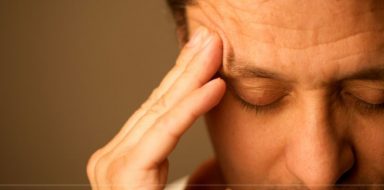Postmenopausal Acne
As much as we hoped that we left acne behind in our teen years, menopause wants to reacquaint us with our blemished skin. As women go through menopause and into postmenopause, acne can make a comeback, but there are some things you can do to minimize its impact.
What Causes Postmenopausal Acne?
Just as in puberty, changes in hormone levels affect how your skin protects and regenerates itself, therefore postmenopausal acne is considered hormonal acne.
As levels of female hormones (e.g., estrogen) drop before/during menopause, some women develop acne. As estrogen declines, androgen levels (the male sex hormones that each woman has) remain constant, and your body experiences a relative increase in the effect of these male hormones. With the “increase” in testosterone, the skin’s sebaceous glands produce more sebum (an oily substance that blocks pores).
Be on the lookout: postmenopausal acne starts at or after menopause in darker-skinned, formerly oily-skinned, large-pored women who usually did not experience adolescent acne.
We cannot just blame menopause. There are other changes that we may experience that contribute to more acne during this time, such as:
- Age: Skin cell regeneration slows down as we age, which applies to both men and women. When the excess cells build up, they block pores that may already be clogged with sebum, and the combination results in inflammation and infection. With infection, the body’s immune response is to drive more white blood cells to the area, and the buildup causes a blemish to form.
- Stress: Stress hormones (like cortisol and adrenaline) are also linked to acne, which is another reason to try to remove stress and stressful triggers from your life.
- Medications: A change in medication may have side effects, and certain types of drugs can trigger acne.
- Genetics: If you had a parent or sibling with postmenopausal acne, you are more likely to have it as well.
Symptoms of Postmenopausal Acne
- You’re likely to spot acne flare-ups near the chin, jaw, and mouth. Pimples can also appear on the chest and back, as well.
- With hormonal acne, blemishes may also appear on the forehead and cheeks because sebum levels are higher in these areas.
- With mild acne, you will notice whiteheads and blackheads. Neither of these types of blemishes causes pain or swelling. If they become inflamed, they can turn into cysts or pustules.
- Moderate acne has inflamed and non-inflamed lesions such as papules, pustules, cysts, and nodules, which may leave scars. When they are inflamed, they can be painful, sore, bumpy, and red.
- Severe acne has widespread inflamed lesions. Cystic acne is a severe type of acne where pores are blocked and lead to inflammation and infection; this type of acne is relatively uncommon.
Acne at any age can impact self-esteem, which may lead to depression in some instances.
How Long Does Menopausal Acne Last?
Time for the good news: menopausal acne is temporary, and skin should calm down once a woman’s postmenopausal hormone levels recalibrate.
Just be patient and follow recommended treatments and prevention techniques to minimize the impact.
Treatment for Postmenopausal Acne
Skin is thinner and dryer postmenopause, therefore treatments used to handle teenage skin are often too harsh as we get older. A few options to address postmenopausal acne:
Topical Treatments
Over-the-counter topical medications like benzoyl peroxide can be used to target blemishes and are easily acquired. Topical antimicrobial gels can combat acne-causing bacteria.
Retinoids, a derivative of vitamin-A, help treat blackheads or small pimples. Some products, like retinol, can increase the skin’s sensitivity to sunlight, so use sunscreen when using these products.
Oral Medications
Your doctor may prescribe medication, such as an antibiotic. There are options, like Spironolactone, which is an anti-androgen used to treat hormonal acne.
Hormonal Treatments
Women who undergo hormone replacement therapy (HRT) often notice a clearer complexion as a benefit. The extra estrogen from HRT helps your skin retain elasticity and softness and defends against breakouts. This is not a guaranteed response, and there are some instances where HRT triggers an acne problem.
Skincare Routine Recommended by Dermatologists
Washing acne-prone skin twice a day with a cleanser that contains salicylic acid (which helps unclog pores). When washing, be sure to remove all traces of makeup.
Avoid products that dry your skin (some acne products can cause this, which makes acne worse). Note that many skin creams cause the skin to dry out, so use a light, acne-specific moisturizer, and SPF based skin cream.
If you are having issues controlling your acne, make an appointment with an expert. In some cases, a dermatologist may recommend hormone treatment.
How to Prevent Postmenopausal Acne
There are some things you can do to minimize the impact of postmenopausal acne:
- Avoid harsh products and scrubbing as postmenopausal skin can be easily irritated or damaged.
- Don’t pop your pimples. In addition to oil from your fingers touching your face, skin becomes more fragile as we age, so it may scar more easily (following menopause, there is a slowdown of collagen production).
- No tanning, as it is not good for your skin.
- Go through your cosmetics. Oil-based makeup products can worsen acne, especially for skin that’s already plagued by excess oil. Switch to water-based or mineral cosmetics instead.
- Drink lots of water and make sure your diet is rich in vitamins, minerals, and omega-3 essential fatty acids.
- Daily exercise can help reduce stress, which is a major acne trigger.
Put yourself in the habit of a good skincare routine, and be sure to include a healthy diet and exercise. While there is no cure-all for postmenopausal acne, you will be able to reduce its appearance on your skin.






